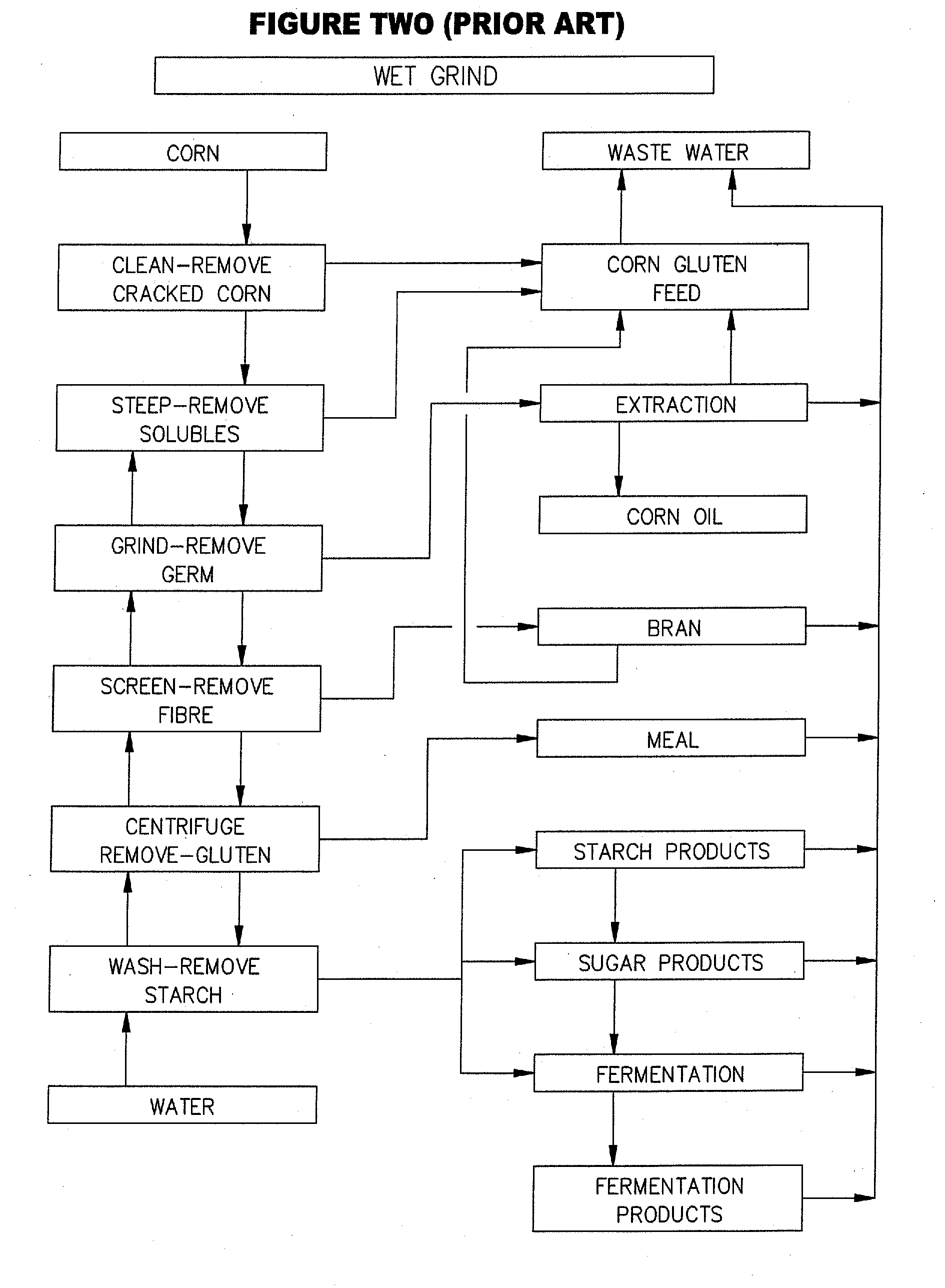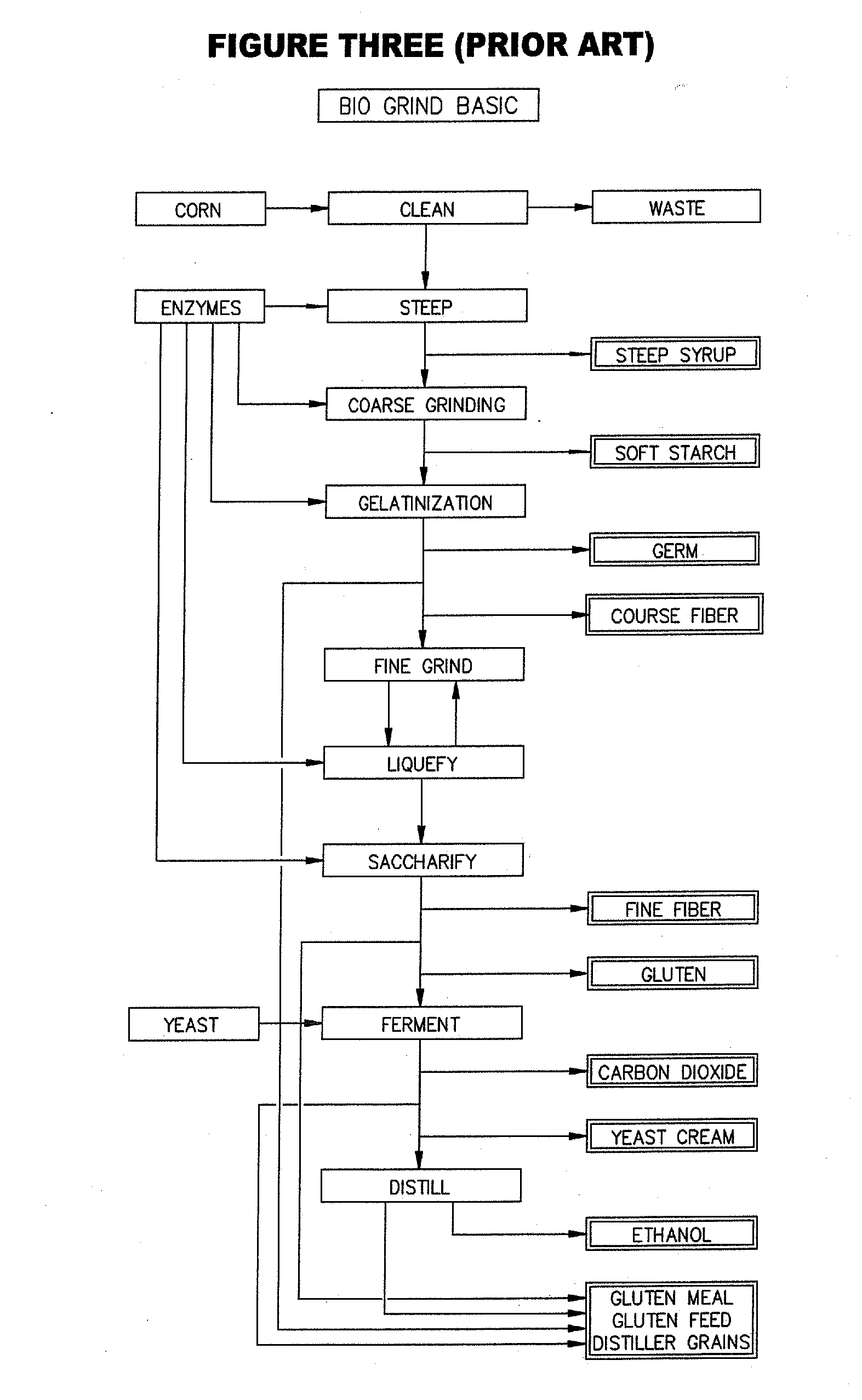Simultaneous Food And Fuel Corn Refining
a technology of fuel corn and food, applied in the field of chemistry, can solve the problems of many ethanol manufacturing plants closing, the conversion of corn to ethanol is economically unattractive, and the lignocellulose does not contribute to ethanol production, and achieves the effect of significant improvemen
- Summary
- Abstract
- Description
- Claims
- Application Information
AI Technical Summary
Benefits of technology
Problems solved by technology
Method used
Image
Examples
Embodiment Construction
[0055]1. The Invention in General
[0056]The Langhauser III integrated corn based bio grind refining (ICBR) process of this invention relates to the integration of established Dry Grind, Wet Grind, Bio Grind and Bio Mass Grind processes for the fractionation of Corn Steep Solids, Germ, Gluten, Starch and Fiber for quality feedstocks for refining pharmaceuticals, food products, chemicals, industrial products, and animal feeds with the balance going to ethanol and other energy products. Bio Mass Grind by-products not used for animal feed can be used for boiler feedstock, gasification, animal bedding or compost. The process retains food nutrition value while producing increased ethanol yields, quality animal feeds and added energy value with reduced water and energy and no process waste.
[0057]The invention is a sustainable method of continuous refining of food products of Corn Oil, Corn Starch, Gluten Protein and Dietary Fibers with priority fractionation processes utilizing established ...
PUM
| Property | Measurement | Unit |
|---|---|---|
| temperature | aaaaa | aaaaa |
| volume | aaaaa | aaaaa |
| viscosity | aaaaa | aaaaa |
Abstract
Description
Claims
Application Information
 Login to View More
Login to View More - R&D
- Intellectual Property
- Life Sciences
- Materials
- Tech Scout
- Unparalleled Data Quality
- Higher Quality Content
- 60% Fewer Hallucinations
Browse by: Latest US Patents, China's latest patents, Technical Efficacy Thesaurus, Application Domain, Technology Topic, Popular Technical Reports.
© 2025 PatSnap. All rights reserved.Legal|Privacy policy|Modern Slavery Act Transparency Statement|Sitemap|About US| Contact US: help@patsnap.com



